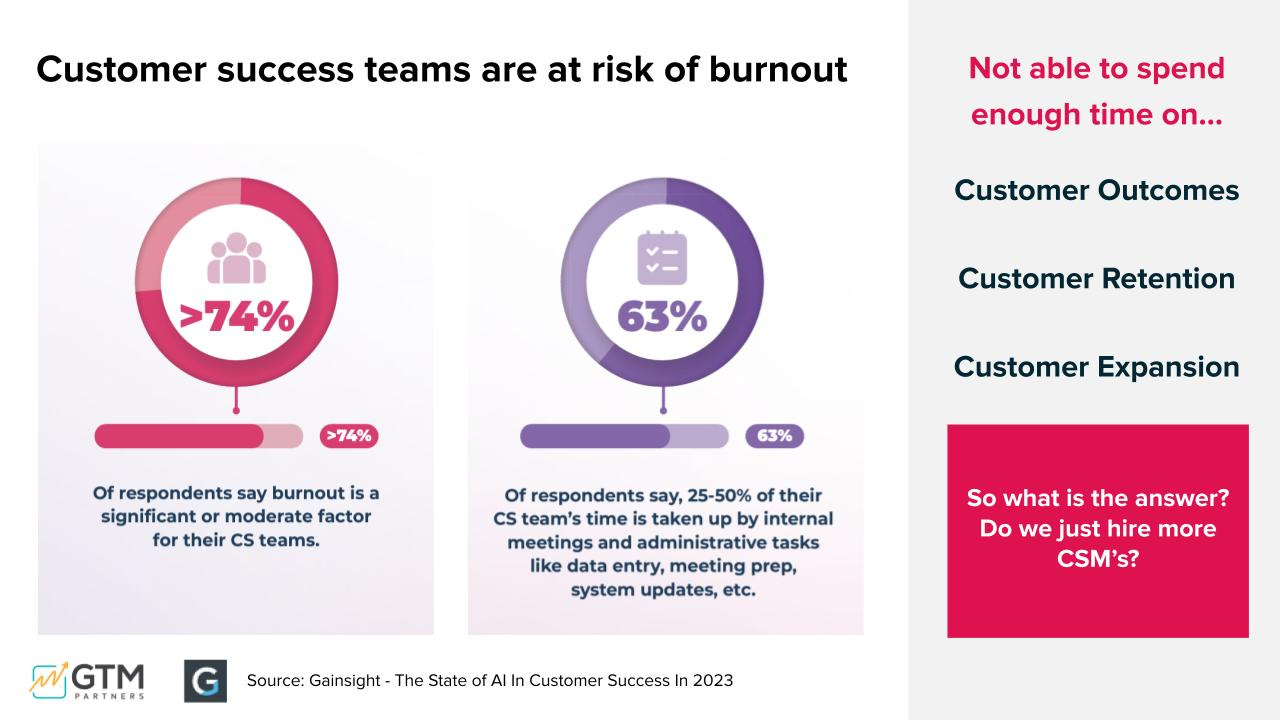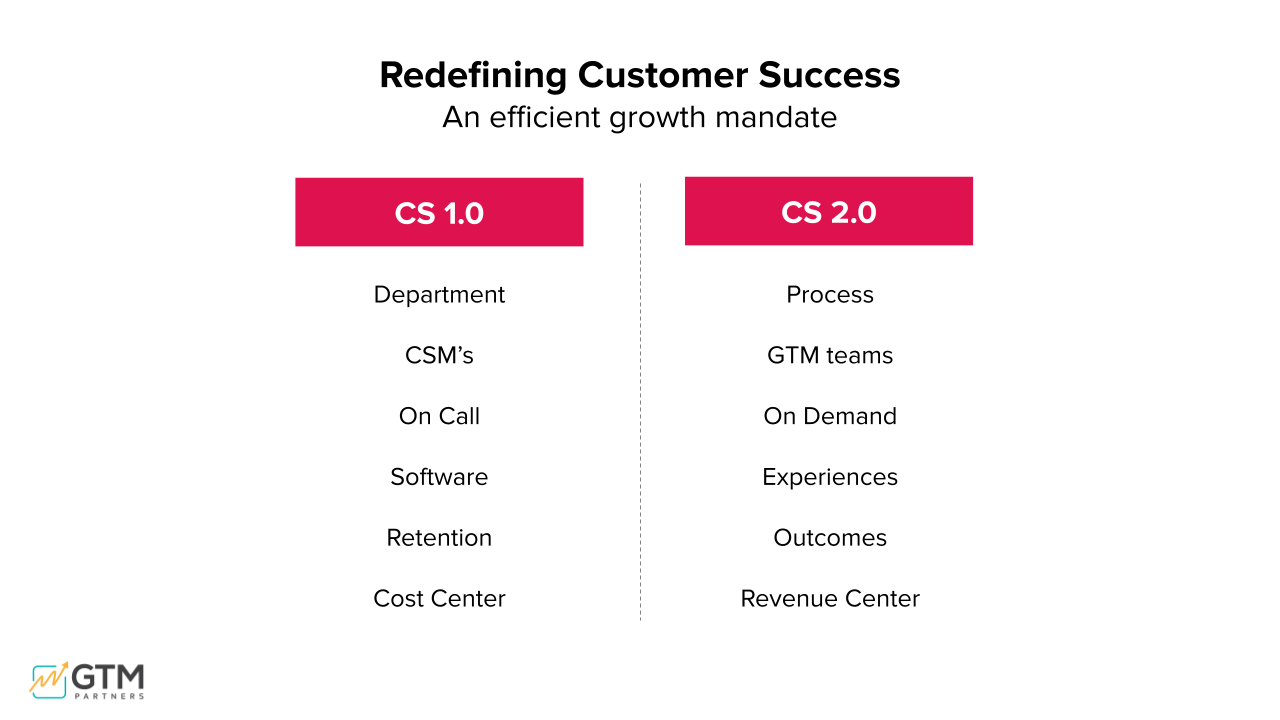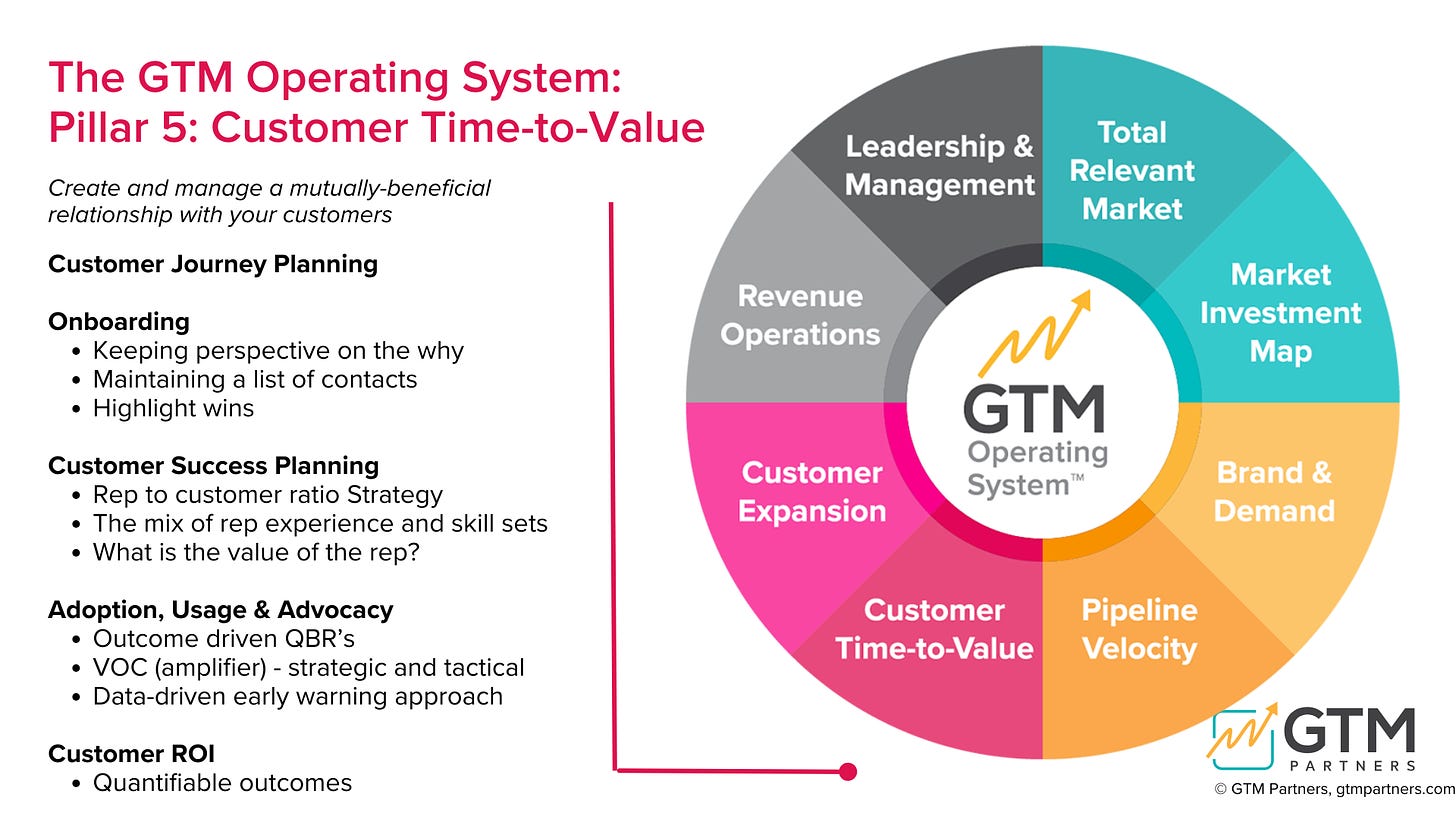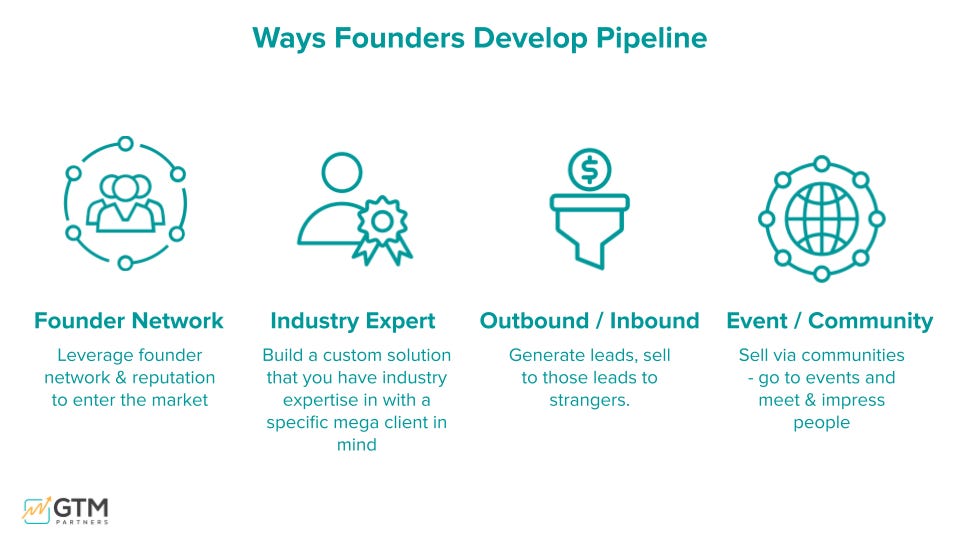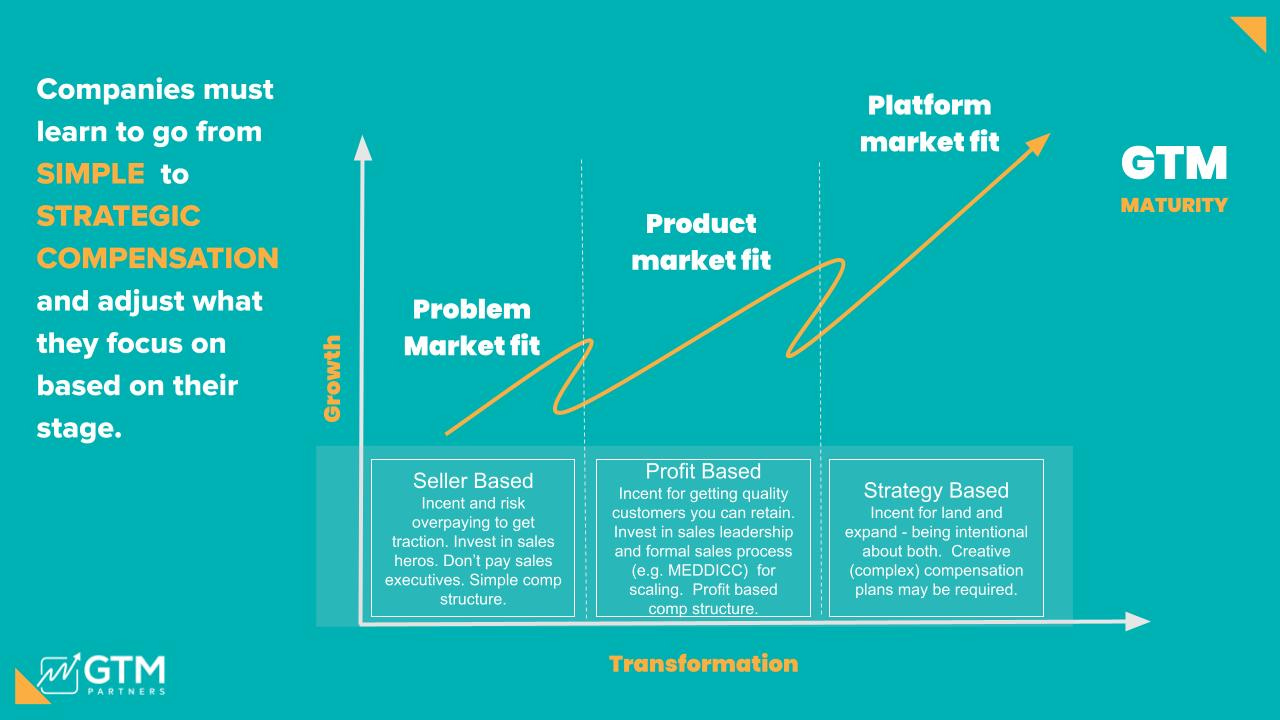Filters
Stop Putting Customer Success in the Corner
Buying criteria for B2B companies have shifted dramatically in recent years. Companies that used to make decisions based solely on price and features and functionality are now looking more at ROI, value and usability.
In fact, according to G2 research, 47% of buyers expect to see ROI within 6 months. Here’s the full list of what buyers are looking for:
Top Buyer Considerations:
Ease of implementation
ROI within 6 months
Scale with my team
User adoption
Support
Easily integrated
Features
Price & Security
Notice features and price come in last.
Customer Success and Product: Welcome to the GTM Team!
You could take the findings we shared above and just use it to inform your sales and marketing.
You could change up your messaging, collateral, and sales decks to focus more on ROI, ease of implementation, and how naturally it will scale with your customers’ teams.
You should do that!
You should make sure your sales and marketing efforts reflect the changing needs of the market as reflected by our research and the data from G2 (and of course buyers in some industries and products will still be very focused on price and features, despite overall market trends).
But we have an even BETTER idea for you.
Instead of making your GTM strategy focus on the appearance of better ROI, ease of use, and scalability, you can involve your product and CS teams to make sure you’re actually delivering it.
Since day one, we have advocated that the GTM team should involve marketing, sales, customer success, and product. The team needs a champion that has authority or political capital to marshall resources from all teams.
Because if you have a renewal problem, it could mean CS is falling down on the job. Or it could mean your sales team is selling to the wrong customers, that marketing is emphasizing value you don’t actually provide, or that your product doesn’t deliver on expectations.
In this research note, we want to focus on customer success.
Customer Success Teams Are Burned Out
According to research from Gainsight, 74% of respondents said burnout is a factor for their CS teams.
63% of respondents say up to half of their CS team’s time is taken up by internal meetings and administrative tasks (data entry, meeting preparation, system updates, etc).
When your CS team is spending up to half their time on things that don’t provide clients value, they have less time to focus on customer outcomes, retention, and expansion.
Your CS team is tired, feeling under-appreciated, and probably not delivering a fraction of the value they could be providing.
Don’t believe us? Do an anonymous poll of your own CS team and ask them:
On a scale of 1-10, how burned out do you feel?
How many hours a week do you spend on data entry, non-client meetings, and other administrative tasks?
Do you feel you are an integrated part of the GTM team?
On a 1-10 scale, how important do you think CS is to the success of this company?
Do you feel the executive team appreciates and values the contributions of customer success?
Turning Customer Success from a Cost Center to a Revenue Center
Executives that underfund or marginalize Customer Success do so at their own peril.
Looking at Customer Success purely as a cost center is old school. We need to look at CS less as a department and more as a process that involves on-demand customer experiences that increase retention and expansion.
6 Ways to Realize the Potential of Customer Success in Your Organization
Focus on Customer Retention and Expansion: The primary goal of a customer success team should be to ensure customer satisfaction and retention. Happy customers are more likely to renew and expand their contracts, which directly contributes to revenue.
Upsell and Cross-sell Opportunities: Train your team to identify opportunities where they can upsell or cross-sell products or services either in conjunction with a sales or account management team or more independently.
Improve Product Adoption and Usage: CS plays a pivotal role in ensuring that customers are utilizing the product or service to its fullest potential.
Data-Driven Decision Making: Use data analytics within a customer success platform to understand customer behavior, identify trends, and make informed decisions that lead to more targeted upselling and cross-selling.
Performance Metrics Shift: Shift the team’s performance metrics from traditional support metrics like response time and resolution rate to metrics that are tied to revenue, such as retention rate, customer lifetime value, and expansion revenue. If you want CSMs to help with renewals and expansions, incentivize them accordingly.
Integrate CS with the Full GTM Team: Ensure that the customer success team works closely with sales and marketing to provide a seamless customer experience and to leverage cross-functional insights for revenue generation. There should also be a feedback loop between CS and product: customer success teams have direct insight into customer needs and challenges that should inform product development, leading to improvements or new features that can drive additional revenue.
This has been a sneak peek of some research we working on now related to Customer Time to Value, the fifth pillar in our Go-to-Market Operating System.
Stay tuned for our report!
In the meantime, if we can help you strategize on customer time-to-value or anything else, we’d love to do a short strategy call to explore your needs.
Last week, we just had our 12th roadshow since we were founded, and our last of 2023. In 2024, we’re coming to Tampa, Austin, Seattle and more!
If you want to sponsor a roadshow in your city, we have one or two spots left for next year.
Have a wonderful week as always, and hope this was useful to you.
Love,
GTM Partners

